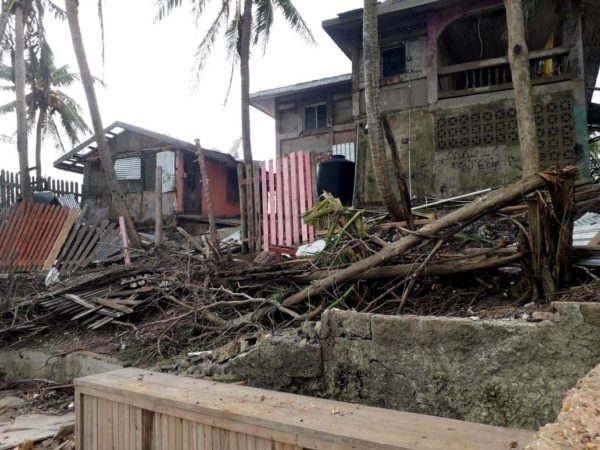The Red Cross on the Recent Hurricanes in Nicaragua

During the hurricanes, the Red Cross evacuated almost 64,000. Now it will provide psychosocial care and will help to rehabilitate drinking water sources.
By Ivan Olivares (Confidencial)
HAVANA TIMES – The decision by citizens inhabiting dangerous zones, to abide by the guidelines to evacuate from the Nicaraguan Red Cross and some local authorities, was decisive in not having to regret a greater number of deaths, says the director of that organization, Auner Garcia, interviewed in the “Esta Noche” program, which is broadcasted online.
The arrival of hurricane Iota to the national territory, classified at that time as a category 5 storm, put the population in the entire northern belt of the country at great risk. It’s a portion of the country that already suffered from poor economic conditions. Just two weeks before it was also hit by the onslaught of nature embodied in Hurricane Eta.
Evacuations prevented many more deaths
The official count indicates that 21 citizens died from causes related to Hurricane Iota. Garcia explained that the figure includes a father and a son who died when they returned to their property to confirm their possessions were safe. Likewise, those who perished in the landslide that occurred in the “Macizo de Penas Blancas” (Matagalpa). These had declined to be moved to a safer location.
“One of the great points with which the Red Cross assesses the evacuation process is that the people complied with the guidelines of the municipal authorities. That was very important, and it is still important, that people follow the guidelines and agree to evacuate. That is why until now, we are not regretting human losses in the North Caribbean,” he assured.
Deaths were reported in Jinotega, Matagalpa, Wiwili and Bonanza. However, in Bilwi “where the hurricane entered and hit strongest, we have no human losses reported so far. This is a good indicator that people complied with the warnings of local authorities to evacuate. The process took place in coordination with first-response organizations, in this case the Nicaraguan Red Cross,” Garcia explained.
The Red Cross participated in the evacuations that were carried out from the early hours of Sunday, November 15. This was prior to the arrival of hurricane Iota on Monday. A team was sent from Managua to help its Bilwi branch. They worked in coordination with the Municipal and National Disaster Prevention Committees in several municipalities, especially Waspam and Prinzapolka.
“Through November 17th we participated in more than 63,914 evacuations, coordinated with local organizations. On Tuesday night, we had 683 shelters activated,” he specified.
Active Solidarity
Following Hurricane Eta, the Government prevented the solidarity efforts of the Nicaraguan people to help those affected. But the director of the Red Cross made known they have an active National Collection Center, where they receive donations. These can come from the private sector, Government institutions, and NGOs. Likewise, from agencies working with them “to coordinate efforts to bring relief and support to the people in those localities.”
He further noted, “the Nicaraguan Red Cross works in coordination with the municipal authorities, the regional government, and the Central Government, which is the authority in charge, through SINAPRED, of which we are also part.”
Garcia said that even before Iota’s arrival in Bilwi, they sent a humanitarian caravan that was stationed in that city. From the seat of the North Caribbean Regional Government, intervention plans were drawn to assist affected families: water, food, blankets, psychosocial support, etc.
He noted that “after a disaster of this magnitude, people are emotionally affected. Therefore, the Red Cross has coordinated efforts to bring a professional psychosocial support staff to assist families in this area.”
“Along with emotional well-being, we will also provide water and sanitation,” he added. This, given the contamination of wells and other water sources in the area. That work will be under the supervision of “trained personnel and equipment to quickly activate water purification and supply families, just as we did a fortnight ago, after Eta arrived in the Prinzapolka sector,” he specified.
Monitoring risk zones
Even when the intensity and persistence of rains diminished, the accumulated rainfall and the flooded areas showed that relief agencies cannot lower their guard. Garcia said that they have identified critical points, and vulnerable communities in various parts of the country. Places affected from the two hurricanes that devastated the area in such a short time.
The institution’s experts are conducting an operational analysis of critical points. In the Department of Rivas, “we are following the situation experienced by places like Tola and the Ochomogo (river). The river had overflowed flooding nearby communities.”
The director of the Red Cross said they also are closely monitoring what happens in some locations in the North Caribbean such as Haulover, and more than 116 communities in Waspam, where “Eta had already caused very strong damage. Then Iota hit them again.” The idea is to be ready to “intervene in a timely manner.”
Similarly, its network of branches reported considerable damage is reported in “Wiwili arriba” and “Murra” (Wiwili). In Managua, they had prepared a brigade to attend neighborhoods of the capital identified as red zones for flooding.





